Colonial and State Census Records
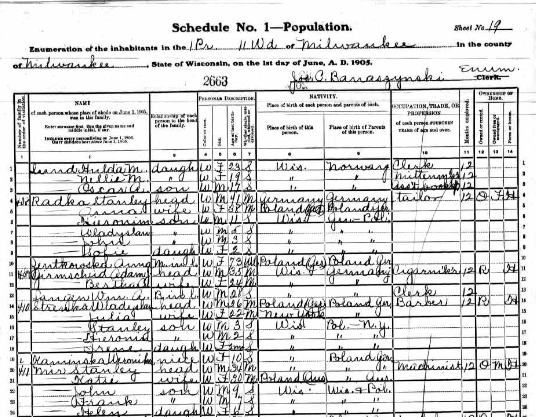
Censuses are not conducted in a vacuum. They occur amidst internal and external crisis, shifts in cultural interests, and events that become ‘defining moments’. They also reflect growth of the population as well as changing values and interests of Americans. Therefore, they can add valuable information that can enhance your family’s history and should be sought out. Content ranges from statistical tables only, to significant genealogical information, and will vary widely in content depending on the time and place they were taken.
Thirty-seven states took censuses separately and apart from federal censuses. The number taken ranges from one census year, such as California in 1852, to 24 years, such as Mississippi between 1792 and 1866. Budget constraints during the Great Depression prevented further state enumerations, although Florida’s last state census was taken in 1945. Non-federal censuses generally have content similar to that of the federal records of the same time period and occasionally request information not collected in federal censuses. It’s also important to know that just because a state legislature authorized a census doesn’t mean one was actually taken.
Censuses for some towns and counties exist for the early American colonies and for areas colonized by France, Spain, and Mexico. There are also lists of early residents, sometimes referred to as “censuses,” that have usually been reconstructed from other records, such as tax and land records.
COLONIAL PERIOD (PRE-1774)
One great source for pre-federal census records is the book American Population Before the Federal Census of 1790 by Evarts B. Greene and Virginia D. Harrington. For each colony/state, there’s a chronological listing of general available enumerations, followed by local ones arranged alphabetically by settlements and counties. Information was gleaned from archives in Britain, the US, and from a wide range of published sources. The book is an exhaustive survey of surviving population lists, estimates, and statistics produced in the American colonies before the first federal census of 1790. Population lists, which are of paramount importance to genealogists, include poll lists, tax lists, taxables, militia lists, and censuses originally drawn up for taxation and local defense. It also includes territories such as Illinois Country, Kentucky, Tennessee, and northern and southern Indian Departments. Figures 1 and 2 show some entries for the colony of Georgia.
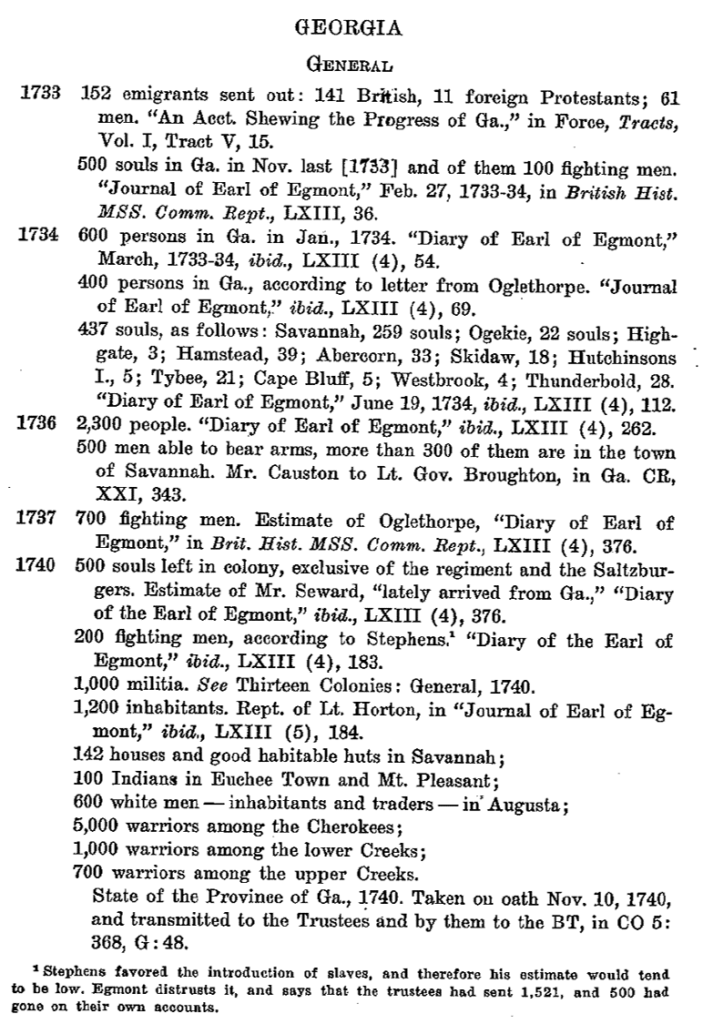
taken in colonial Georgia. American Population Before
the Federal Census of 1790, pp. 182-183.
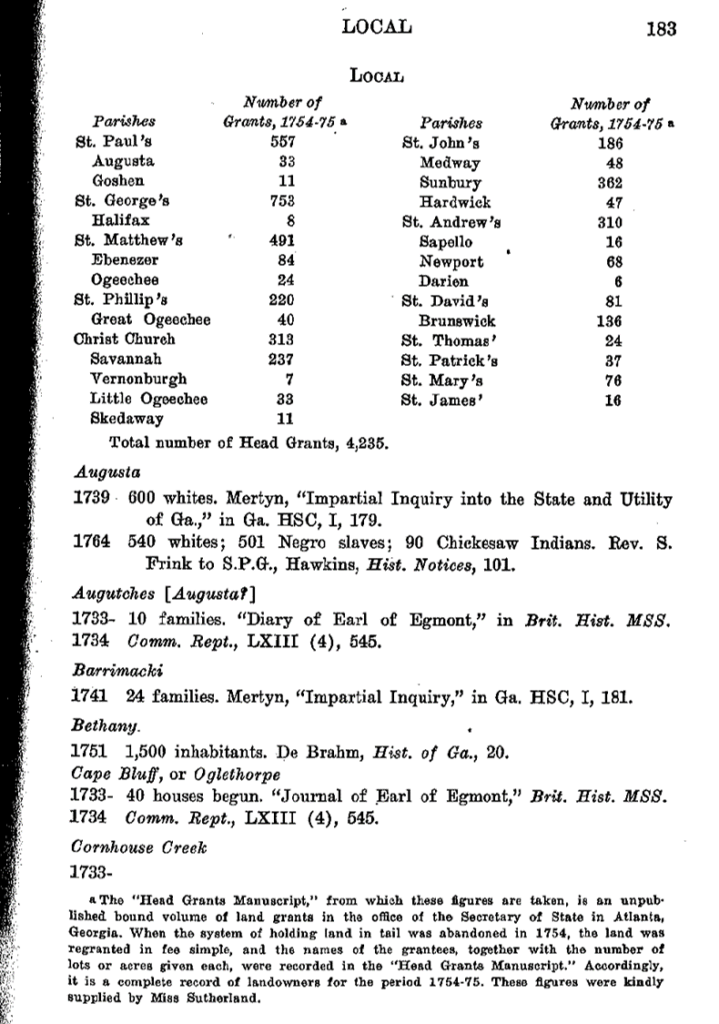
Here’s an example of a census of recently settled Acadians taken in colonial Spanish Louisiana in 1766 (Fig. 3). “The original records are located at the National Archives of Spain, as part of the General Archives of the Indies (Estado General de Todos Los Habitanes de La Colonia de la Luisiana, 1766, Santo Domingo, 2595). The digital images are the property of the National Archives of Spain and cannot be used for any purpose other than research.” (Missouri State Archives)
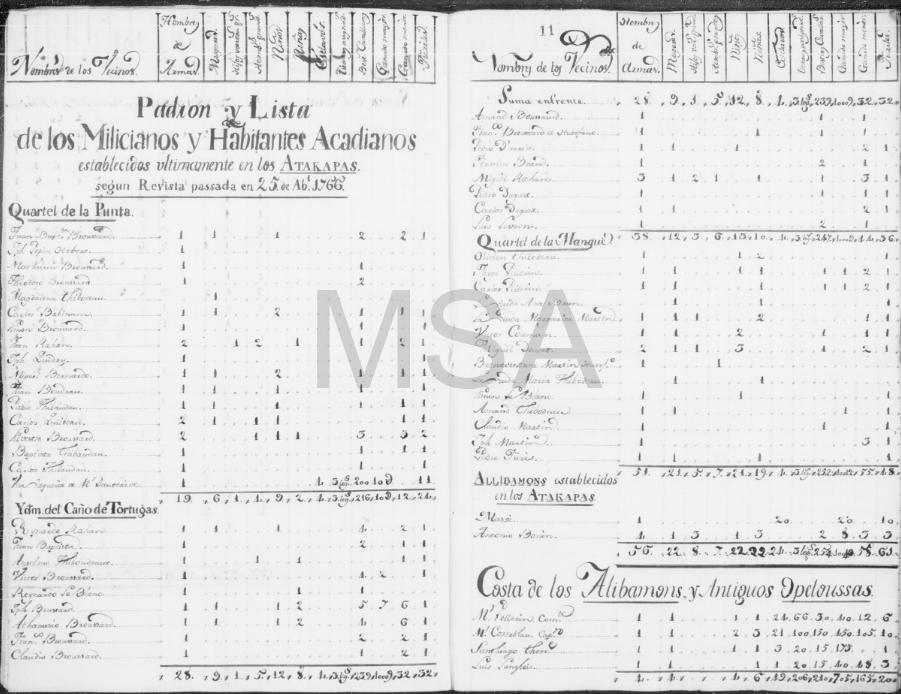
Several factors contributed to incompleteness and inaccuracy of records. Sometimes the British Board of Trade had a hard time getting the information desired. Its demands were often partially complied with, sometimes entirely ignored, and were generally a source of friction. Consequently, statistics are not always reliable. Colonial governors encountered so many obstacles that in many cases the tables they prepared were based on muster rolls and lists of taxables instead of actual counts. Small populations over large areas, travel difficulties, the independent spirit of the people, religious superstition, and no compensation for many enumerators were all factors inhibiting accurate counts.
Colonial population records (pre-1774) were produced in American colonies before first federal census. Enumerations from the colonial period were conducted by the British Board of Trade to obtain information which would be valuable in the administration of affairs of the colonies. These enumerations were considered more or less accurate, and were made in nearly all northern colonies. Nearly all enumerations were more than a simple numbering of people; in some instances, inhabitants were classified by race, sex, age, and marital condition. However, no enumeration embracing all colonies was ever made; in some colonies no accurate count was made during the entire colonial period
CONTINENTAL PERIOD, 1774-1789
The British Board of Trade played a great part in educating colonials to appreciate the value of accurate statistical information because it demanded exact returns of population at frequent intervals. Several states took one or more censuses during Continental period. States taking censuses at this time and on their own initiative were those in which enumerations had been made by the British. This was significant because people were already used to the process and officials knew what to expect in response. States making no enumerations were mainly those in which no colonial enumerations had been made. It’s believed that these headcounts probably compare well with first federal census in terms of accuracy and completeness.
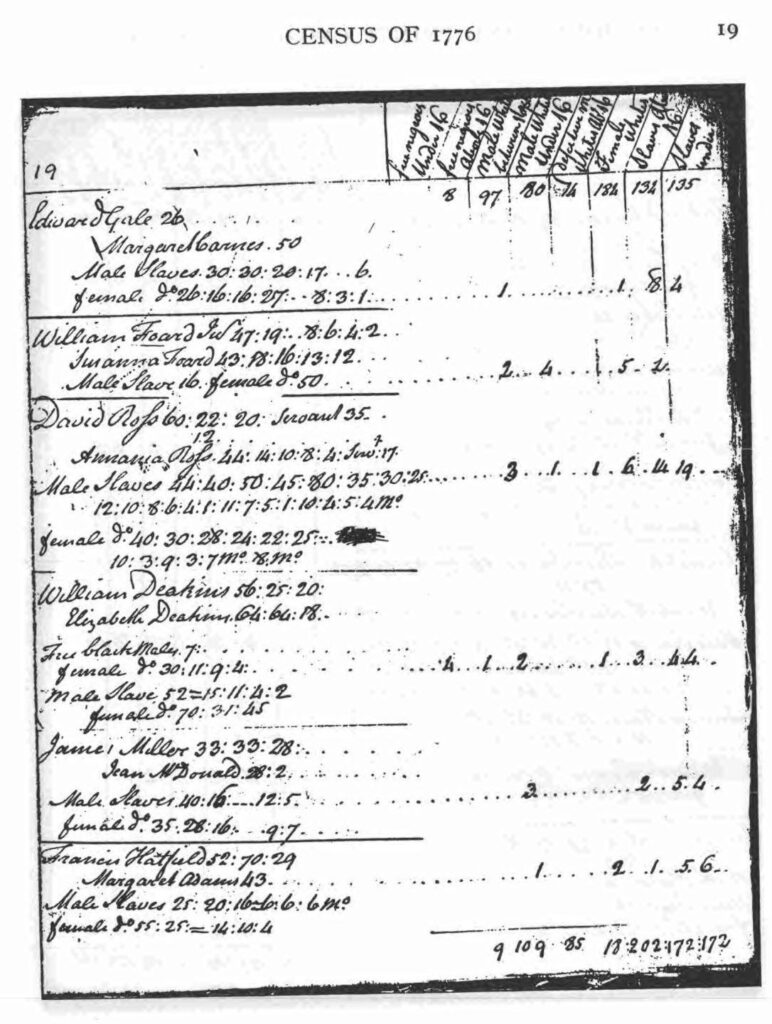
Gaius Marcus Brumbaugh, Maryland Records:
Colonial, Revolutionary, County and Church, from
Original Sources, Vol. 1, p. 19.
Another example is the 1776 census of Maryland, which was taken to see what the total tax levy would be on Maryland residents in order to raise funds for the Continental Army. Baltimore, Talbot, Dorchester, Queen Anne’s, Caroline, and Anne Arundel counties, like the later 1790 federal census would do, listed only the heads of households and grouped the rest of the household by age and sex. Other counties like Harford, Prince Georges, and Frederick named each person and gave their age, sex, and race (Fig. 4).
FEDERAL PERIOD STATE CENSUS (1790-1945)
State censuses can be as important as federal censuses to genealogists but because they were taken randomly, they remain a much under-utilized resource in American genealogy. State censuses often can serve as substitutes for some of the missing federal census records – most notably the 1790, 1800, 1810, and 1890 censuses.
Many state censuses also asked different questions than the federal census, thus recording information you won’t find elsewhere in the federal schedules. For example, if you had ancestors on the Rhode Island 1865 census, you would find the name of the town where they were born (Fig. 5). New York state censuses of 1855, 1865, and 1875 show the county of birth for New York natives (Fig. 6). The federal government offered to partially compensate states and territories that voluntarily took an off-year census in 1885, but only Colorado, Dakota Territory, Florida, Nebraska, and New Mexico Territory responded. Like the decennial censuses of 1850-1880, the 1885 enumeration includes mortality schedules listing those who died during the year prior to the headcount (June 1, 1884-May 31, 1885).
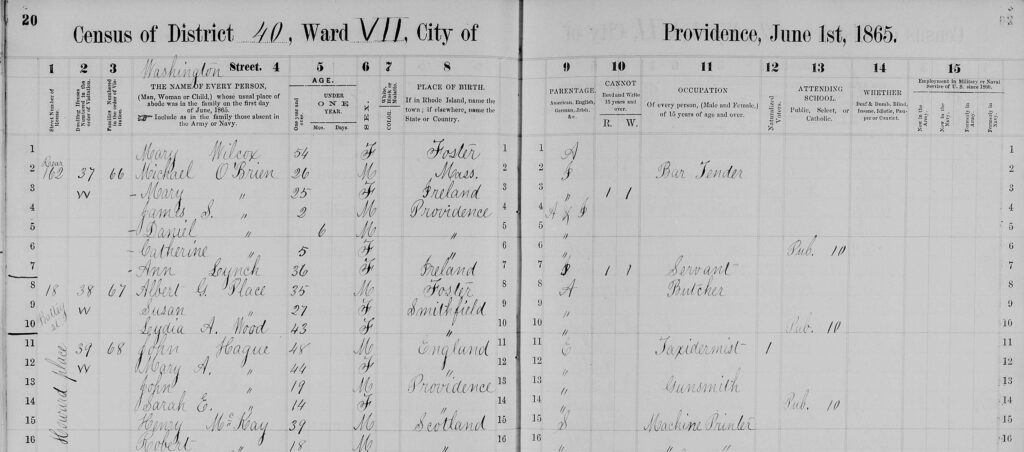
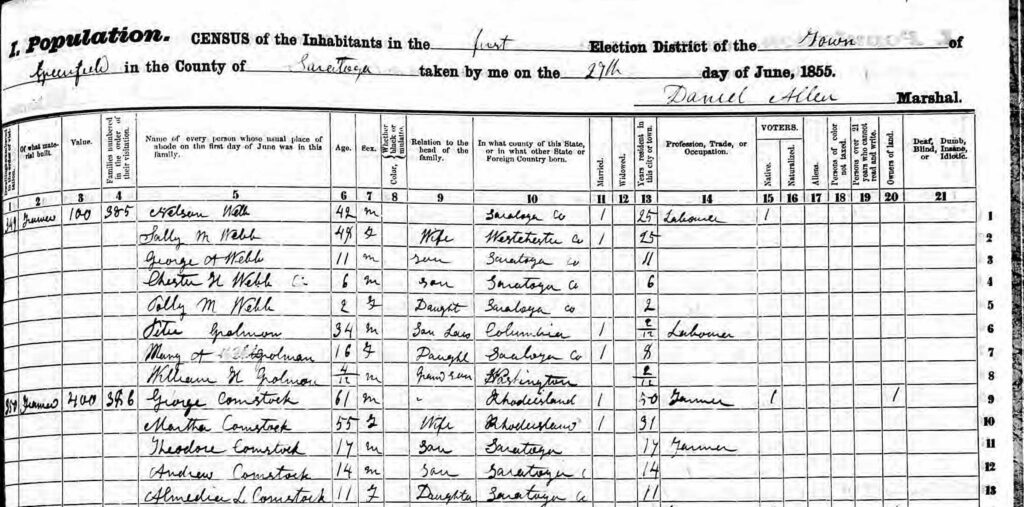
Probably the best example of state census content is the 1925 Iowa state census (Fig. 7), and if you have people in Iowa at this time, you are incredibly fortunate! The census includes information about birth, nativity, and religion. It also provides the names of parents, including mother’s maiden name. In addition, the place where the parents married was also listed. The questions asked went across three pages. This census was compiled in books that included 150 people per book. For each person, 11 sections of information was gathered. These 11 sections included 71 columns.
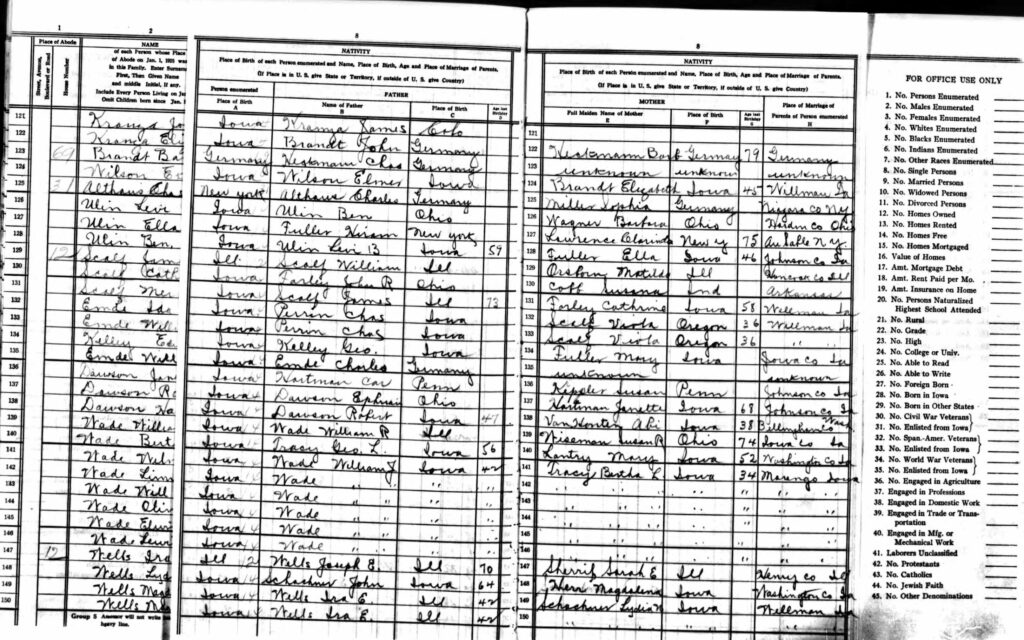
Another reason to locate an extant state census is that it can help you identify children who were born and/or died between certain years between state and federal censuses, especially before vital records were officially kept.
While not all states took their own censuses, and some have not survived, state and local census records can be found in many locations. State censuses were often taken in the years between the federal censuses, such as 1875 or 1892. For some states these exist from about 1825-1945. Most states which took censuses usually did so every 10 years, in years ending in “5” (1855, 1865, etc.) to complement the federal census. These state census records are most often found at the state archives, state library, or state historical societies. Many are online via free and subscription genealogy databases like FamilySearch and Ancestry. Check out the FamilySearch Wiki for more state census information and links.
Copies of many state censuses are on microfilm at the FamilySearch Library. The FamilySearch Library’s most complete collections of state censuses are for Illinois, Iowa, Kansas, Massachusetts, Minnesota, Mississippi, New Jersey, New York, Rhode Island, and Wisconsin. But censuses also exist for Arizona, Arkansas, California, Colorado, Delaware, District of Columbia, Florida, Georgia, Hawaii, Indiana, Louisiana, Maine, Maryland, Michigan, Missouri, Nebraska, Nevada, New Mexico, North Carolina, North Dakota, Oklahoma, Oregon, Rhode Island, South Carolina, South Dakota, Tennessee, Texas, Utah, Virginia, Washington and Wyoming. State, colonial, and territorial censuses at the FamilySearch Library are listed in the Place Search of the FamilySearch Catalog under “STATE – CENSUS RECORDS”
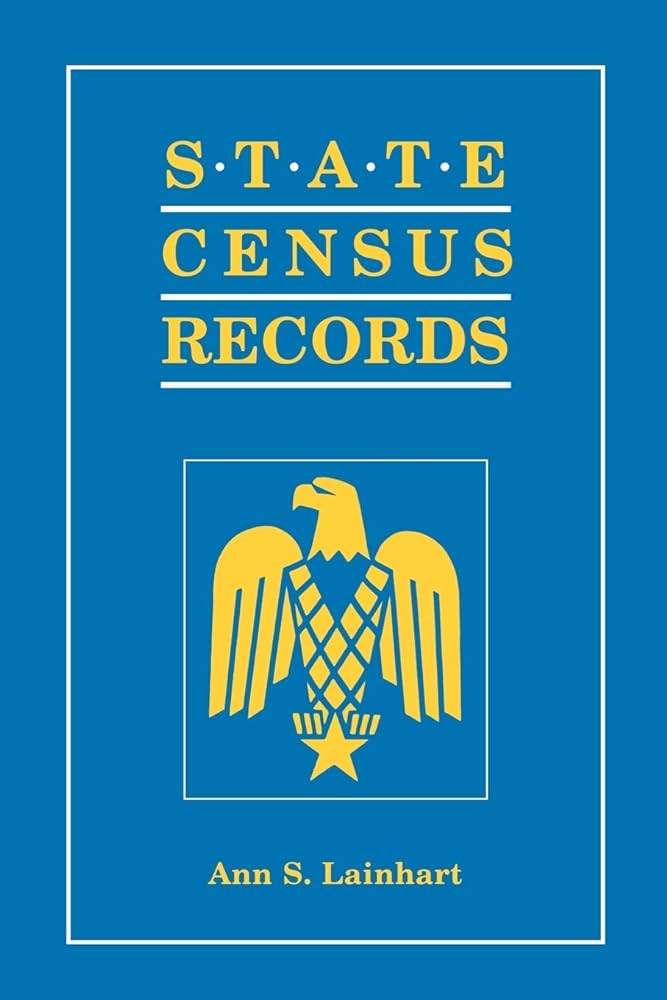
S. Lainhart
The best source for state census records is State Census Records (1992) by Ann S. Lainhart (Fig. 8). It’s a state-by-state list of censuses and selected census substitutes for 43 states and describes their dates, coverage, content, indexes, and availability. You can find a extracted list of states and enumeration years from this book here or access it at the Internet Archive by setting up a free account.
Another good resource is William Dollarhide’s three-volume set, Census Substitutes & State Census Records An Annotated Bibliography of Published Name Lists for All 50 U.S. States and State Censuses for 37 States, 3rd. ed. (2020) (Fig. 9). The first volume covers the northeastern states and US territories; the second covers southeastern states; and the third covers the northcentral states. Census substitutes are name lists taken from military lists, tax lists, directories, land ownership maps, voter registrations, and other compilations of names of residents for an entire state, portions of a state, and larger counties of a state.
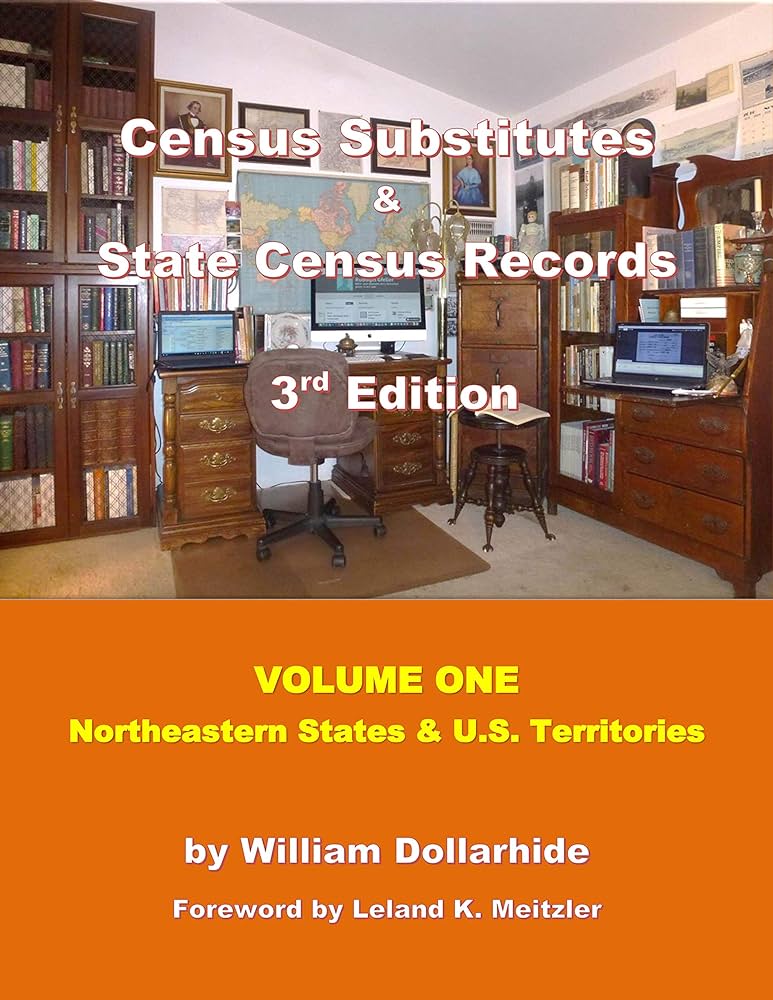
Dollarhide
Although incomplete due to underfunding and US entry into World War II, Henry J. Dubester’s State Censuses: An Annotated Bibliography of Censuses of Population Taken After the Year 1790 by States and Territories of the United States (1941) (Fig. 10) is still a helpful annotated work that chronologically lists and describes the various published state censuses. Like the Lainhart book, you can access this at the Internet Archive if you first set up a free account.
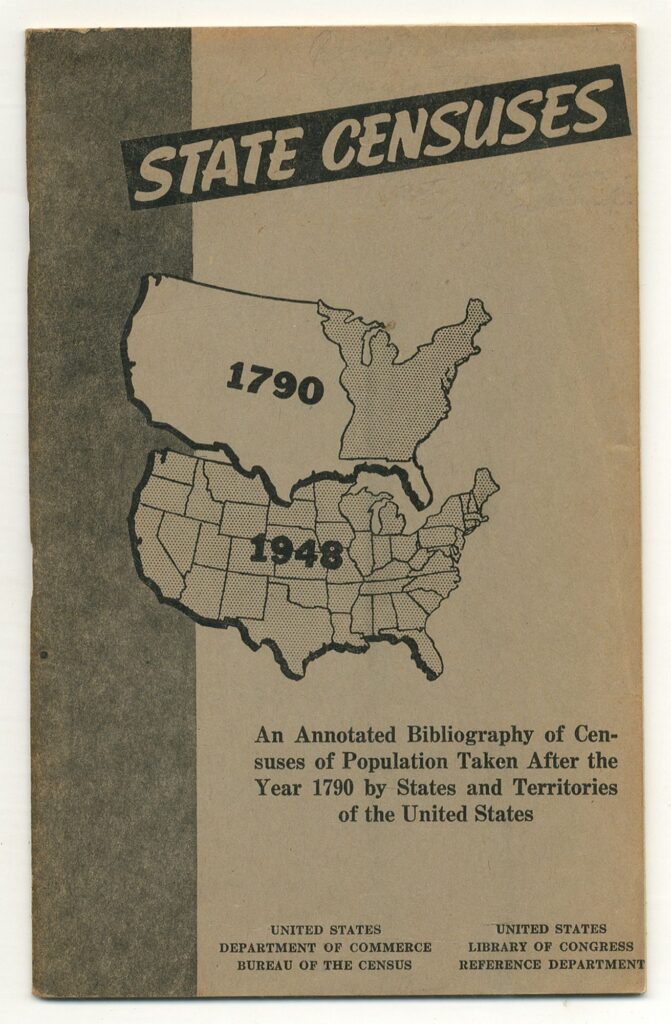
Dubester
In addition to FamilySearch, there are several helpful sites that can direct you to these genealogical gems. “Genealogy Research Guides – State Census Records” includes links to some online indexes and records. Cyndi’s List is another great portal to state census records. Some early “censuses” may even be found in published county histories, such as this 1720 list of freeholders in Albany Co., City of Albany, Schenectady Township in New York.
Don’t count on federal enumerations alone for tracing your ancestors! Use all available colonial and state census records to gather as much information as possible about your families from those records. It’s well worth the effort.





Recent Comments